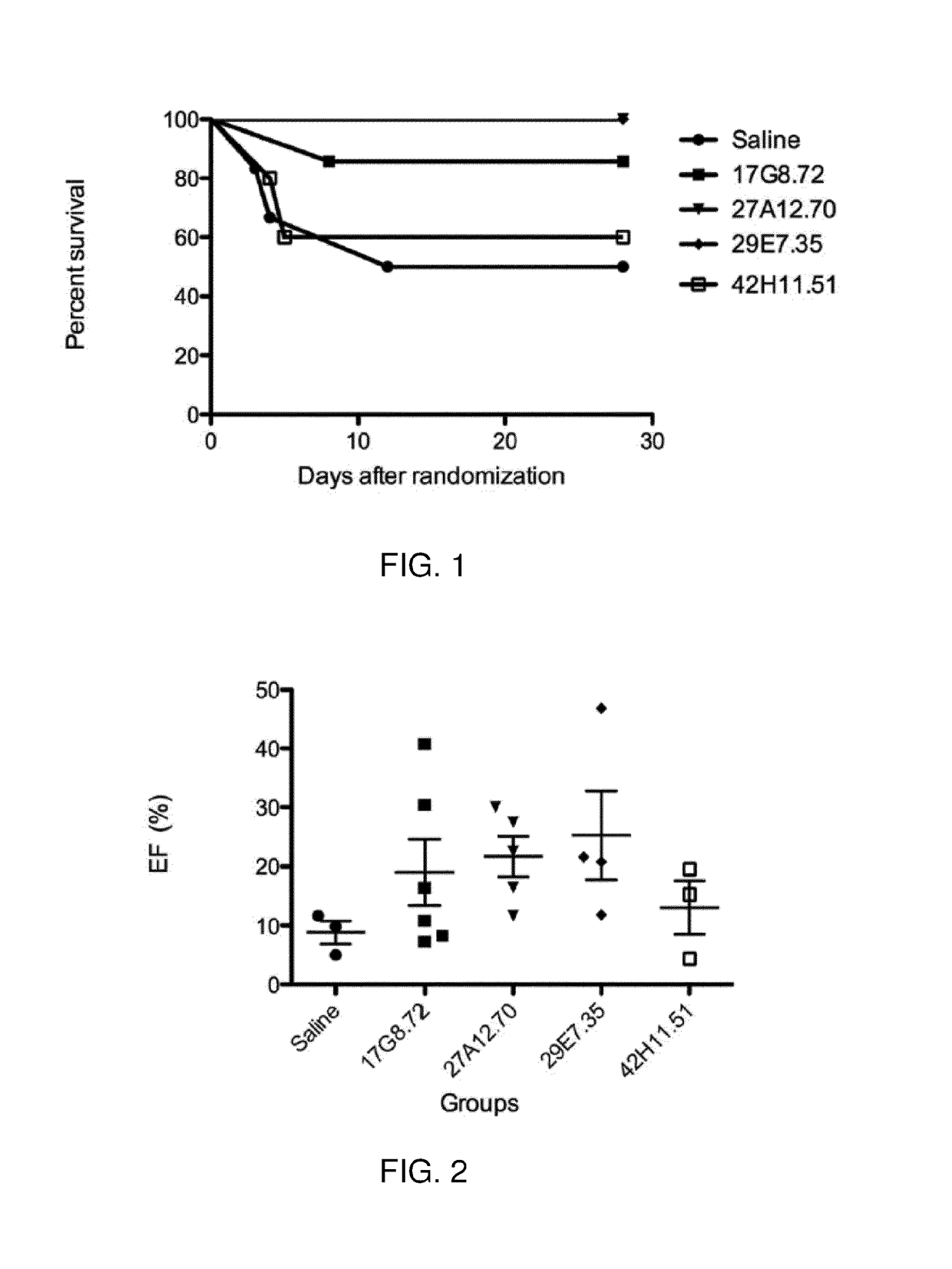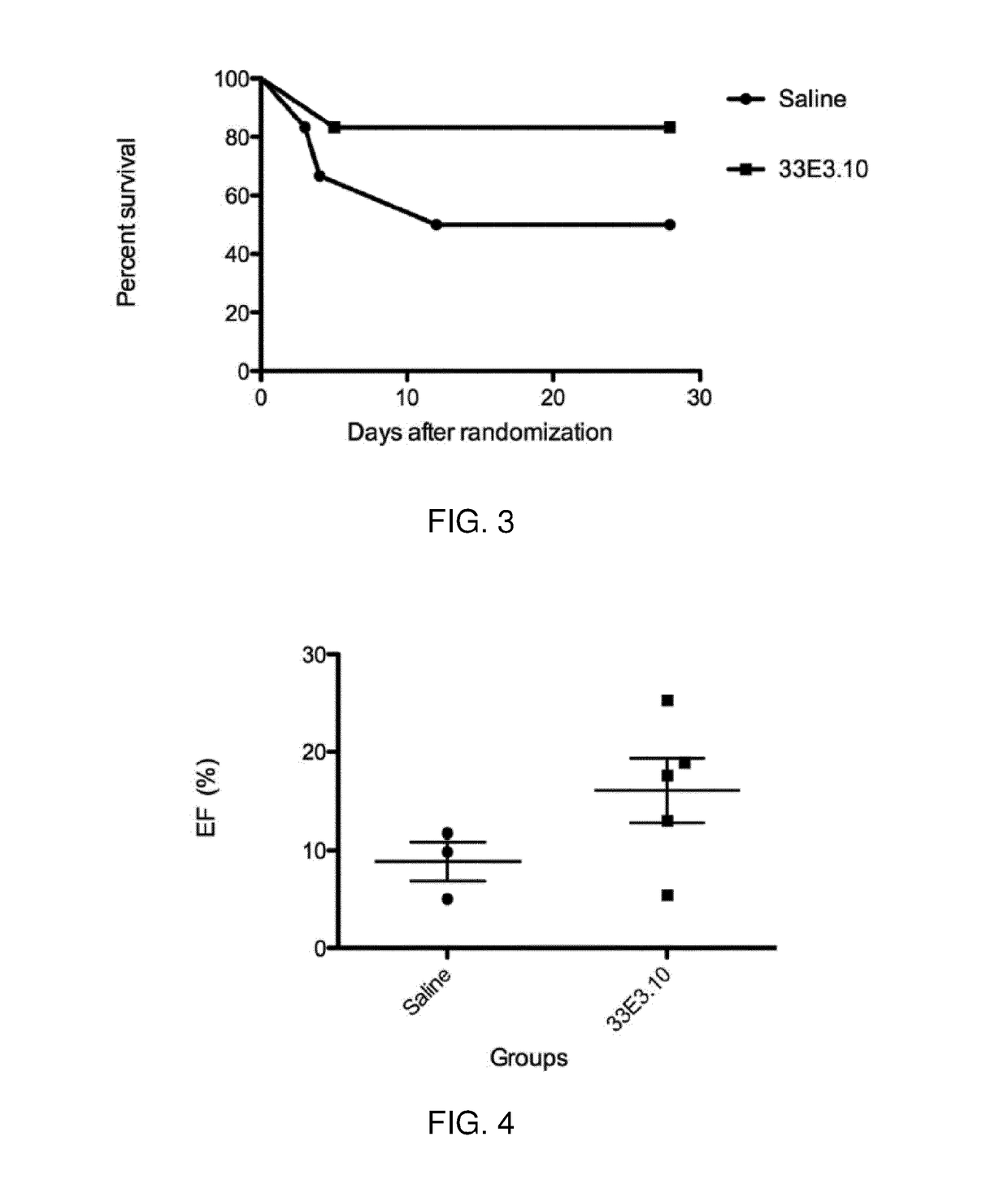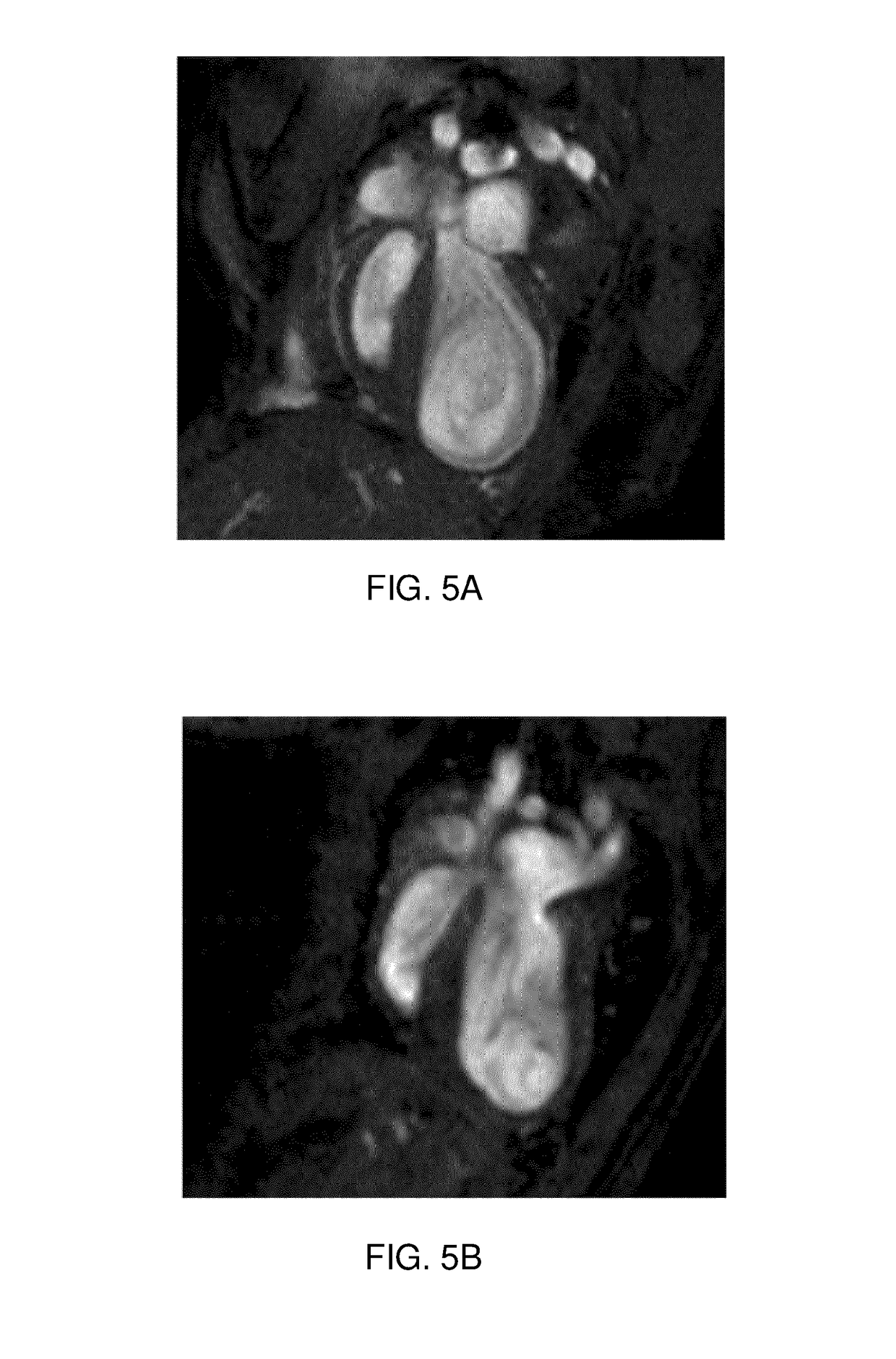Immunoglobulin-like molecules directed against fibronectin-EDA
a technology of immunoglobulin and fibronectin, applied in the field of medicine, can solve the problems of worse cardiac function, increased myocardial infarction-related complications or conditions, and even bigger problems, and achieve the effect of improving angiogenesis and improving angiogenesis
- Summary
- Abstract
- Description
- Claims
- Application Information
AI Technical Summary
Benefits of technology
Problems solved by technology
Method used
Image
Examples
example 1
Methods
Peptide Synthesis and Screening Assays
[0223]Linear and CLIPS peptides were synthesized based on the amino acid sequence of the target peptide (i.e. TYSSPEDGIHELFPAPDGEEDTAELQGGC (SEQ ID NO: 27)) using standard Fmoc-chemistry and deprotected using trifluoric acid with scavengers. The linear and CLIPS peptides were short fragments of various length, which may possibly contain the epitope. The constrained CLIPS peptides were synthesized on chemical scaffold in order to reconstruct conformational epitopes, using Chemically Linked Peptides on Scaffolds (CLIPS) technology. For example, the single looped peptides were synthesized containing a dicysteine, which was cyclized by treating with alpha, alpha′-dibromoxylene. The size of the loop was varied by introducing cysteine residues at variable spacing. If other cysteines besides the newly introduced cysteines were present, they were replaced by alanine. The side-chains of the multiple cysteines in the peptides were coupled to CLIPS ...
example 2
Animals and Experimental Design
[0228]Male Balb / C wild-type mice (10-12 weeks, 25-30 g) received standard diet and water ad libitum. Myocardial infarction was induced by left coronary artery ligation, just below the left atrial appendage. All animal experiments were performed in accordance with the national guidelines on animal care and with prior approval by the Animal Experimentation Committee of Utrecht University.
Myocardial Infarction In Vivo
[0229]Mice (Balb / C) were anesthetized with a mixture of Fentanyl (Jansen-Cilag) 0.05 mg / kg, Dormicum (Roche) 5 mg / kg and medetomidine 0.5 mg / kg through an intraperitoneal injection. Core body temperature was maintained around 37° C. during surgery by continuous monitoring with a rectal thermometer and automatic heating blanket. Mice were intubated and ventilated (Harvard Apparatus Inc.) with 100% oxygen. The left coronary artery (LCA) was permanently ligated using an 8-0 vicryl suture. Ischemia was confirmed by bleaching of the myocardium and...
example 3
Myocardial Infarction In Vivo
[0233]Male Balb / C wild-type mice (10-12 weeks, 25-30 g) were subjected to the procedure for induction of myocardial infarction as taught herein in example 2. They were also treated with the same antibodies.
Echocardiography
[0234]Mice underwent serial assessments of cardiac dimensions and function by high resolution echocardiography (Vevo 2100, FUJIFILM VisualSonics, Inc., Toronto, Canada) under isoflurane anaesthesia 28 days after myocardial infarction. Long axis and short axis images with 1.0 mm interval between the slices were obtained and used to compute end-diastolic volume (EDV, largest volume) and end-systolic volume (ESV, smallest volume). The ejection fraction (EF) was calculated as 100*(EDV-ESV) / EDV.
Results
Antibodies 27A12.70, 29E7.35, 17G8.72, 42H11.51
[0235]The results showed that relative to mice treated with saline, mice treated with antibodies 27A12.70, 29E7.35, 17G8.72 and 42H11.51 displayed improved heart function following myocardial infar...
PUM
| Property | Measurement | Unit |
|---|---|---|
| pH | aaaaa | aaaaa |
| pH | aaaaa | aaaaa |
| temperature | aaaaa | aaaaa |
Abstract
Description
Claims
Application Information
 Login to View More
Login to View More - R&D
- Intellectual Property
- Life Sciences
- Materials
- Tech Scout
- Unparalleled Data Quality
- Higher Quality Content
- 60% Fewer Hallucinations
Browse by: Latest US Patents, China's latest patents, Technical Efficacy Thesaurus, Application Domain, Technology Topic, Popular Technical Reports.
© 2025 PatSnap. All rights reserved.Legal|Privacy policy|Modern Slavery Act Transparency Statement|Sitemap|About US| Contact US: help@patsnap.com



